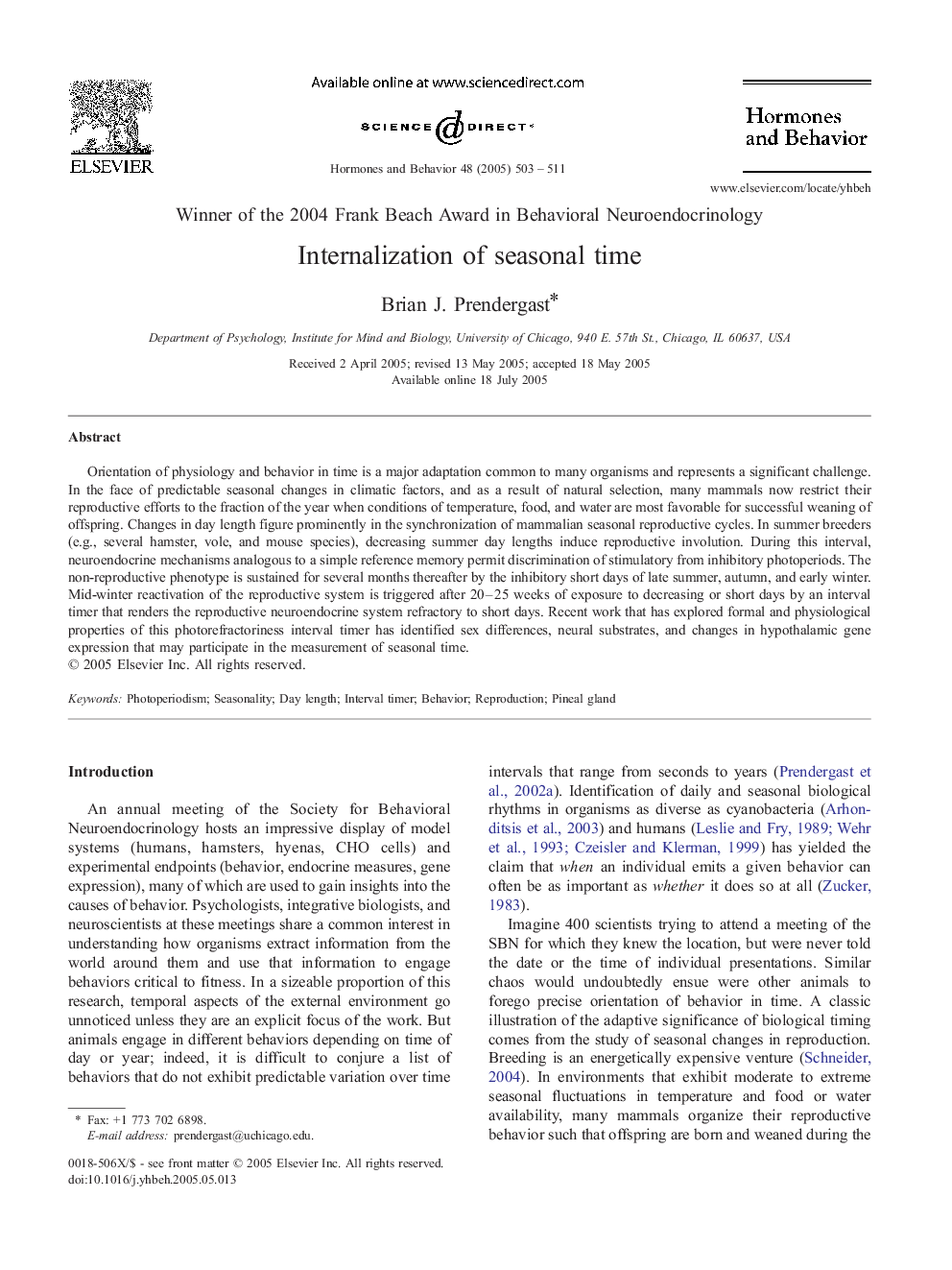| کد مقاله | کد نشریه | سال انتشار | مقاله انگلیسی | نسخه تمام متن |
|---|---|---|---|---|
| 10301559 | 540913 | 2005 | 9 صفحه PDF | دانلود رایگان |
عنوان انگلیسی مقاله ISI
Internalization of seasonal time
دانلود مقاله + سفارش ترجمه
دانلود مقاله ISI انگلیسی
رایگان برای ایرانیان
کلمات کلیدی
موضوعات مرتبط
علوم زیستی و بیوفناوری
بیوشیمی، ژنتیک و زیست شناسی مولکولی
علوم غدد
پیش نمایش صفحه اول مقاله

چکیده انگلیسی
Orientation of physiology and behavior in time is a major adaptation common to many organisms and represents a significant challenge. In the face of predictable seasonal changes in climatic factors, and as a result of natural selection, many mammals now restrict their reproductive efforts to the fraction of the year when conditions of temperature, food, and water are most favorable for successful weaning of offspring. Changes in day length figure prominently in the synchronization of mammalian seasonal reproductive cycles. In summer breeders (e.g., several hamster, vole, and mouse species), decreasing summer day lengths induce reproductive involution. During this interval, neuroendocrine mechanisms analogous to a simple reference memory permit discrimination of stimulatory from inhibitory photoperiods. The non-reproductive phenotype is sustained for several months thereafter by the inhibitory short days of late summer, autumn, and early winter. Mid-winter reactivation of the reproductive system is triggered after 20-25 weeks of exposure to decreasing or short days by an interval timer that renders the reproductive neuroendocrine system refractory to short days. Recent work that has explored formal and physiological properties of this photorefractoriness interval timer has identified sex differences, neural substrates, and changes in hypothalamic gene expression that may participate in the measurement of seasonal time.
ناشر
Database: Elsevier - ScienceDirect (ساینس دایرکت)
Journal: Hormones and Behavior - Volume 48, Issue 5, December 2005, Pages 503-511
Journal: Hormones and Behavior - Volume 48, Issue 5, December 2005, Pages 503-511
نویسندگان
Brian J. Prendergast,